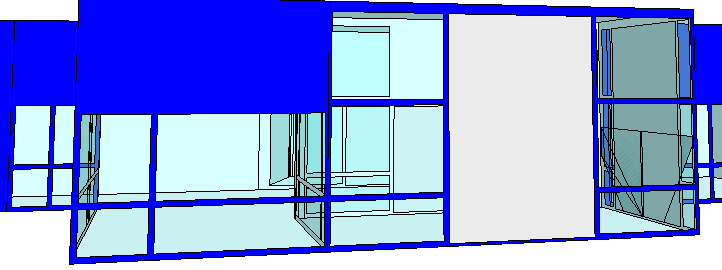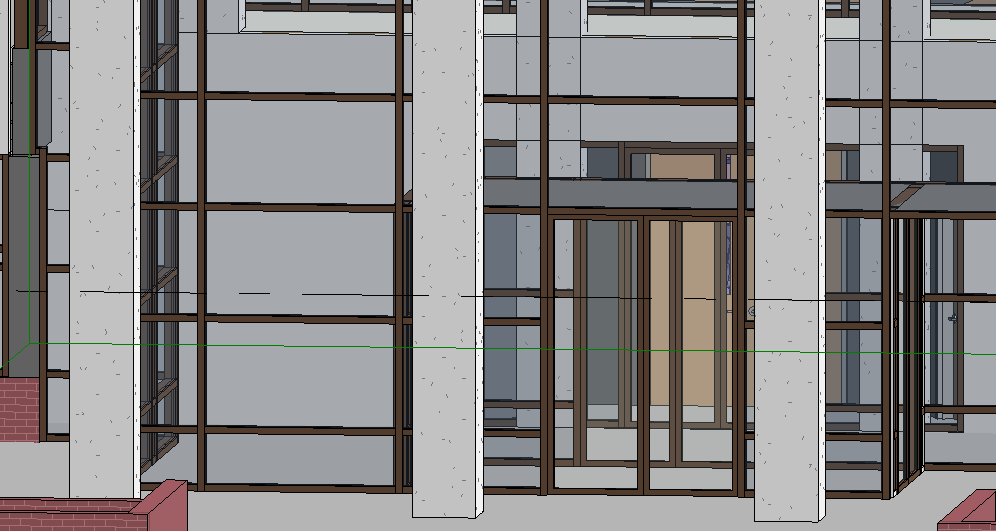Is there a way to have it include the frame as part of the opening area? The VE considers the framing as part of the opening. I believe eQuest does the same.
Assuming that you are asking for this feature in the context of the Revit plugin, that is the default behavior to include the frame. We have an ongoing discussion here to give more flexibility to the user on how to manage this.
Yes, I am asking in context of the Revit plug-in. I have not been seeing it include the frames in the opening. I have just been getting glazed area with wall space between them.
Thank you for the explanation. Can you also copy a screenshot from the Revit file so I better understand what you are expecting to happen here? Are you expecting these glass panes to be touching?
Yes, the way the VE models framing effects as part of the window opening, the window should encompass the entire fenestration area. For daylighting really, the current approach is better because you do get the opaque part for the from, but IES has the ability to add frame in RadianceIES. I don’t think it is often done unless you are doing quite detailed daylight modeling though.
Hi @crduggin - See the new announcement here:
This should allow you to include the frame as part of the aperture after assigning a material to them and keeping them selected in the dropdown.
My one concern about this new feature/workflow is it appear to require the user to make selections for each window type in the model. Most of mine have a huge list where this would be untenable. Could we have a way to make the change say for all window types selected or something?
@mostapha I don’t think this is actually going to work like this. What @crduggin is asking about here is to make Curtain Wall Mullions be parsed as Apertures. A Curtain Wall consists of Panels and Mullions. We parse Panels as apertures, and we don’t touch Mullions. The above improvement doesn’t change that.
This would require some additional thought and a different approach. One issue that I can see this causing is that if we include mullions and panels, then we don’t have any gaps between them. We would need some kind of routine to combine/merge all of these into a single aperture, otherwise they would not be valid with overlapping edges. I don’t think HB schema allows that.
That is right. No overlapping edges. The VE at least would be fine if they are separate openings are long as they don’t overlap. It would increase simulation time some though.
Does it matter if the architect models the curtain wall is a combined family rather than components?
@crduggin I mean, you can already achieve this by simply removing all curtain wall subdivisions. Basically if you just make the wall, one big panel, then Pollination will pick it up and make it into one big aperture.
All other approaches at this point would need some work on our end.
I see. That’s a tricky one since it can introduce unseen issues. It can also add to the time since there can be so many mullions in the model.
What if we expose a frame width/offset value for the curtain wall panels that can be used to offset the glass. @chriswmackey has recently added a few clean up and merge methods for apertures that we can use for this.
I would probably implement this as an app that takes the model from Revit. Takes those offset values and takes care of recreating the model and clean up. The only missing piece is to be able to map the curtain panel type on the apertures. I haven’t checked if we have that exposed as an option for user data.
Man, this method for merging coplanar geometries in close proximity to one another is shaping up to have many more applications beyond what we initially intended.
I can ad a honeybee-core method for merge_neighboring_apertures() that uses the recently-added geometry method to merge the apertures together across a fame distance. We’ll probably end up with some fairly complex and concave window geometries for some cases but it seems like this would give @crduggin what he’s asking for here.

